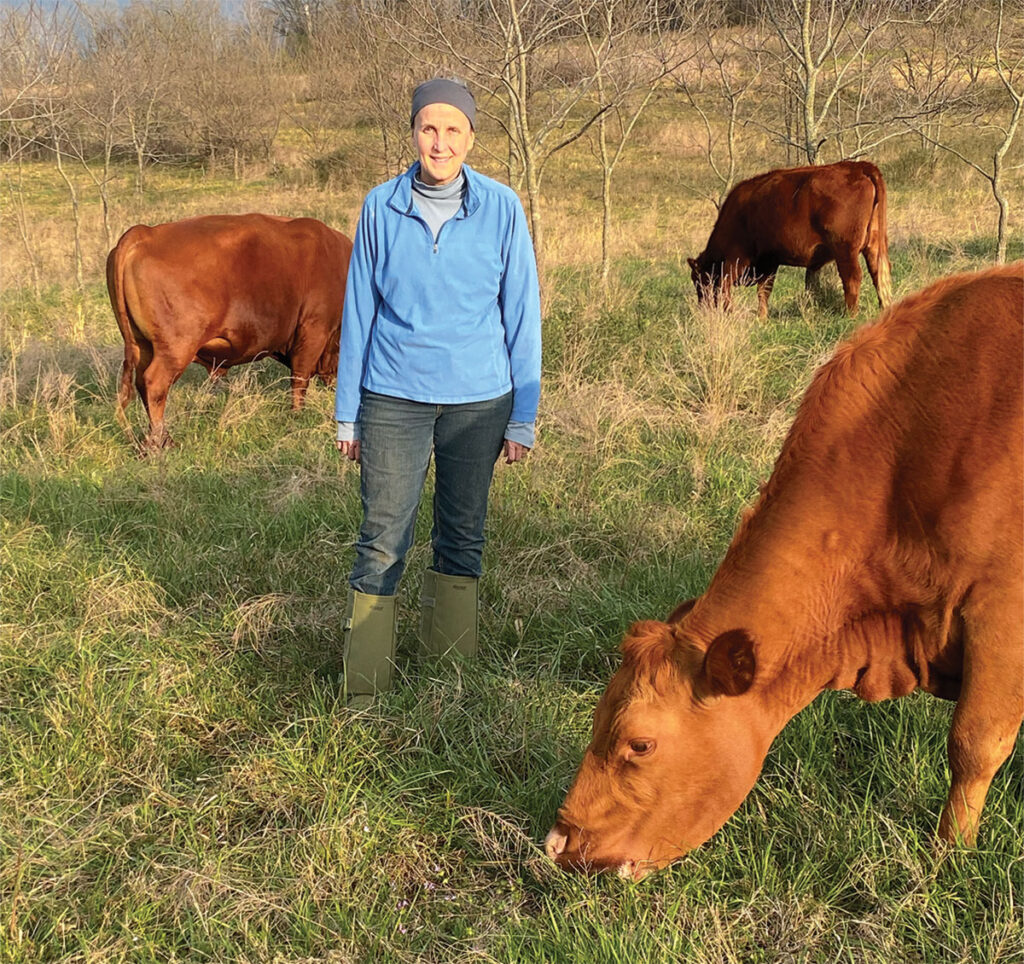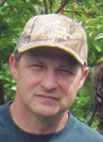
Julie Gahn works to promote diversity on her 130-acre Spring Forest Farm
HULBERT, OKLA. – Julie Gahn didn’t grow up wanting to be a farmer. In fact, for most of her adult life, as a member of the United States Coast Guard, she dealt mostly with an area considered the exact opposite of farmland.
Yet, Julie is now the owner and operator of Spring Forest Farm in Hulbert, Okla. But she said it was her years in the Coast Guard that made her see the necessity for a major overhaul in how food is obtained.
“I got a close-up view of what our whole petrochemical industrial complex is like, and I responded to several oil and chemical spills,” Julie said. “I commuted through the communities that are beside those refineries. I tutored in an elementary school that was near the Houston Ship channel. I just think we can create a better environment for everybody that’s touched by the system if we transition to a more natural approach.”
Julie said for the environmental issues in the world to be solved, farms and ranches must take on a more natural approach. “Change the World by Changing what you eat” is the tagline Julie chose for Spring Forest Farm.
“I don’t think it’s pie-in-the-sky thinking. I think it’s doable,” Julie said. “I think we can minimize our reliance on the whole fossil fuel system. I think we’re transitioning from a petro-chemical age to an ecological age, and I think the air and water will be cleaner, and the soil will be healthier for it if we do it right.”
While in the Coast Guard, Julie’s specialty was environmental health with a focus on industrial hygiene.
“I got to take biochemistry courses when I earned my Master’s degree,” Julie said. “In the Coast Guard, I applied that to worker health and safety.”
But then Julie’s family moved to Oklahoma. Her days in the Coast Guard were over, and she didn’t know what she wanted to do next.
“I kind of made an assessment of my knowledge, gifts and talents, if you will, and tried to figure out what to do with my adult brain while raising young kids,” Julie said. “I ended up starting a community garden first because all that science education combined with raising kids led to an increased interest in nutrition.”
“I think we’re transitioning from a petro-chemical age to an ecological age, and I think the air and water will be cleaner, and the soil will be healthier for it if we do it right.”
— Julie Gahn
Julie said she was inspired by an email from Bob Waldrop, who had started the Oklahoma Food Co-op to connect producers with customers. The email concerned permaculture, which led Julie to take a permaculture design certificate course.
It was in that course she learned of Mark Shepard, a farmer in Wisconsin, who had the best example of farm-scale permaculture in the country.
After a while, Julie found she wanted more than just a community garden. She wanted her own land to create the type of farm she believed was best suited for what she was trying to accomplish.
“We ended up buying 130 acres with the hope of buying enough land to test and demonstrate methods I had learned in the permaculture design course,” Julie said. “So now we are on 130 acres on Double Spring Creek between Tahlequah and Hulbert, Okla.”
Julie and her husband purchased the farm in the summer of 2010. After renovating a cabin on the property, the family moved onto the land in the spring of 2011. To “wrap her brain around farm-scale permaculture,” Julie and her two daughters traveled to Wisconsin that summer to visit Shepard. In return, Julie agreed to host him at her farm for educational events.
One of the ideas Julie has taken from Shepard is increasing diversity and protecting the soil by growing tree crops like pecan and chestnuts.
Julie has picked up other lessons she has adopted for her farm including the USDA-NRCS Five Soil Health Principles: 1) Soil armor; 2) minimizing soil disturbance; 3) plant diversity; 4) continual live plant/root; and 5) livestock integration.

“What I’m trying to do is promote as much diversity on the farm as we can to develop a whole functioning ecosystem. We don’t use chemicals on our pastures. The goal is for the whole ecosystem to take care of itself. It’s just been an adventure in learning how to integrate everything and keep it all working together. I think of it as ‘the dance’ .”
While Julie wants to create her own ecosystem, the centerpiece enterprise of Spring Forest Farm is the raising and selling of beef. She got her starter herd from her first grazing mentors, Ann Wells and Ron Morrow, who own Ozark Pasture Beef in Arkansas.
“I currently have 29 head of cattle. I had a lot more when we had those wet years,” Julie said. “But I culled a lot in 2020 because I worried those wet years were coming to an end and I wouldn’t be able to sustain that level. As a beginner, and as one who doesn’t use sale barns or feedlots, I didn’t have a good system for culling heifers that weren’t going to be good mommas. I finally figured out how to do that working with the processors.”
Her herd is made of mixed breeds, such as Red Angus and Gelbvieh, which are two strains Morrow had been experimenting with.
“There was some black Angus in there, and then the South Pole breed started getting noticed,” Julie said. “That’s a breed that was developed in Alabama to finish well on grass in the heat. I custom-grazed some heifers for Ann Wells, and she purchased a South Poll bull that she bred with those heifers and allowed me to breed with my herd. Recently, I met a South Poll bull breeder that’s accessible to me down near McAlester, Okla., and so I’m working with him to develop a genetically-adapted herd for our conditions here in Eastern Oklahoma.”
Julie doesn’t envision growing her herd much bigger than it is now.
“I’m leaning towards the philosophy of drought stocking. I don’t want the herd to get too big. I think I’m going to keep it around 30 for a couple of years and see if I can really stockpile grass and not need to buy hay,” Julie said. “Hay is the biggest thorn in my side. I don’t enjoy trying to find good hay, and I don’t enjoy getting it delivered and offloading it, and I don’t particularly enjoy feeding it. It’s a lot more fun to just go move a couple of fences and watch the herd enjoy their next paddock. They enjoy their hay but finding a consistent source of hay when you don’t own enough land to make it yourself is hard.” At some point, Spring Forest Farm will transform into the ecosystem Julie has imagined. She wants to add more ruminant species and tree crops from which to earn income. She wants to show this approach can be successful and financially stable. “It’s overwhelmingly humbling, but I think that we each just can do what we can do, and maybe all I’m doing is a drop in the bucket or a drop in the pond, but hopefully it will ripple out,” Julie said. “I was inspired by one farm, and so hopefully our farm will inspire a few, and then those farms will inspire a few, and eventually we can make the transition.”







